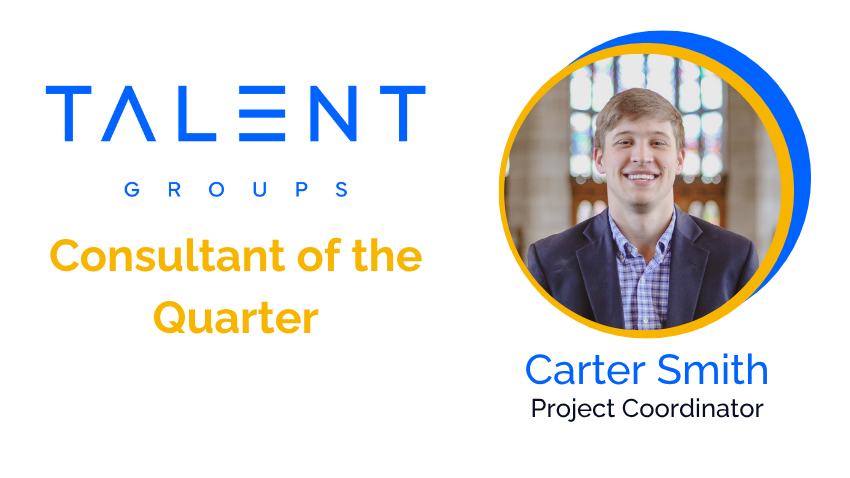
By Talent Group | Blog | August 30, 2021
Providing employees with an increase in opportunity to work from home had been on many companies’ agendas for a long time, but it was not until COVID-19 entered the equation where that idea became a reality. Many companies from small to the enterprise level used to prize face-to-face interactions and long office hours – and the culture at Fujitsu, a Japanese global IT services and solutions company, was exactly that.
An article from the Harvard Business Review revealed that, with over 80,000 employees, Fujitsu was forced to rapidly change their workday approach on a massive scale and the results of their adoption of a hybrid business model have proven to resonate with companies of all sizes.
Prior to Fujitsu’s conversion in March 2020, 74% of their employees considered the office the best place to work. Just 2 months later in May, only 15% still considered the office the best place to work – with 33% voting home and 55% voting a hybrid to be the best. Hiroki Hiramatsu, the Head of Global HR at Fujitsu made the executive decision to not revert to the traditional in-office approach even after adjusting to life after COVID-19. The primary factor he cited in making that decision is something everyone can relate to on some level – and that is commuting. Hiramatsu believes the time spent commuting could be better spent on education, training, or with family; all of which could increase an employee’s productivity.
According to the article, there are four (4) scalability and individual factors to be taken into consideration when implementing a working hybrid model for your business:
- Job and tasks
- Employee preference
- Projects and workflow
- Inclusion and fairness
Each of these factors have multiple facets embedded into the workplace, and it is important to understand their implications in setting up a successful hybrid model. To illustrate this point, we will discuss how each factor is currently carried out at Talent Group.
Job and tasks vary for everyone based on their role with the company. Due to the rapid growth at Talent Group, we have brought on ten-plus new employees, primarily recruiters, in the month of August! As our new recruiters were being brought up to speed, they were asked to come into their respective offices for training and to get a feel for the culture we have created. This training is generally conducted by our Director of Recruiting – so his job and tasks also required them to be in the office. Outside of a meet and greet, the onboarding of new recruiters did not require employees outside of the recruiting and account management departments, to come to the office due to the demands of their job and tasks.
Noted in the article, each job has a unique driver of productivity. In this example, the drivers of productivity are collaboration and coordination, which created the need for employees to meet in-office. However, with the digitalization of the common workplace, the onboarding of new employees no longer necessarily requires HR to be in office. Understanding each job’s drivers of productivity will allow you to curate a hybrid model that will best suit each employee, which leads into the factor of employee preference. While each job may be recommended a different approach based upon their role and functionality, employee preferences will also heavily impact job performance.
Continuing off the previous example, a recruiter with five-plus years of experience who lives forty-five minutes away from the office may not feel like it would be a productive use of their time to commute to the office when they can perform their work remotely. On the contrary, a new recruiter that may not know each point-of-contact for the accounts they support, who also happen to live a healthy walk or a short drive away from the office, might feel like it would benefit them to go in the office. While they are performing the same role, their wants and needs are very different and need to be taken into consideration when implementing a hybrid work model.
People’s wants and needs change in some degree on a daily basis – much like employee’s preferences change based on their current projects and workflows. Hybrid arrangements will inevitably be altered depending on the demands of any current projects. If any tasks can be automated or performed individually, this would decrease the need for face-to-face interaction. However, if tasks are to be assigned amongst a team, inclusion and fairness must be taken into consideration. In the article they reference instances of team managers implementing hybrid models across the board that work best for the managers schedule, but not for other employees. Assigning tasks is a part of a manager’s job, but if luxuries are to be afford, it is vital to not be unfair in doing so. Unfairness will not only come across as offensive, but it can also hurt productivity, reduce collaboration, decrease retention, and increase burnout. Identify what the drivers of productivity and performance are for all employees and try to curate hybrid model arrangements that would best serve them!




